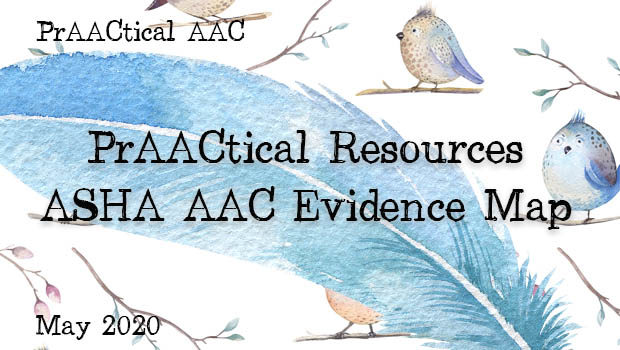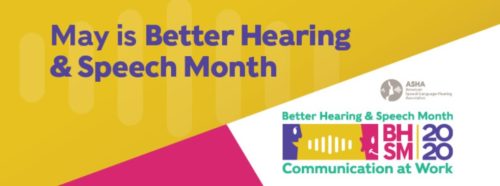PrAACtical Resources: ASHA’s AAC Evidence Map

May is Better Hearing and Speech Month here in the US and in celebration of that, today’s post features an important resource from the American Speech-Language-Heating Association. The AAC Evidence Map was launched a few years ago and has been growing steadily since that time.
ASHA’s Evidence Maps call attention to the three pillars of evidence-based practice (EBP): scientific evidence, clinical expertise, and client values/perspectives They were created for many different areas within the field of speech-language pathology and address clinical services across disability and age groups. Each of the 40+ evidence maps includes information on assessment, intervention, and service delivery for that specific communication difficulty. The information in each one comes from a variety of sources, including refereed journals and professional organizations in several countries.
The AAC Evidence Map includes two types of external scientific information, Clinical Guidelines, and systematic reviews. Individuals studies are not included here. There are currently 138 pieces of evidence in this category, including systematic reviews in areas such as Angelman Syndrome, Down Syndrome, communication interventions during intubation, use of high tech SGDs, aided language input, and functional communication training. Evidence-based clinical guidelines include for cerebral palsy for adults, management of Parkinson’s Disease, and stroke in childhood. You can check out the External Scientific Evidence here.
In the Clinical Expertise area you can find information derived from clinical experts, include consensus statements and ASHA policy documents. They include position statements on Rapid Prompting Method and facilitated communication. The Consensus Guidelines come from a range of groups and organizations and cover topics such as AAC clinical practices, management of autism, and Huntington’s Disease. Currently, there are 29 documents in this category.
The Client Perspectives area provides evidence based on client or caregiver perspectives and addresses expectations, concerns, and client/family values. This section include systematic reviews and guidelines. There are currently 13 documents in this area, covering topics such as perspectives on the use of SGDs, AAC teams, and patient perspectives on AAC in the ICU.
The ASHA AAC Evidence Map is constantly being updated, so check back frequently to see what has been added.

Filed under: Featured Posts, PrAACtical Thinking
This post was written by Carole Zangari
